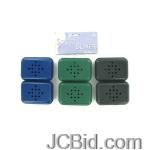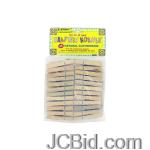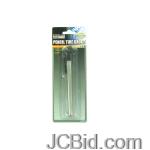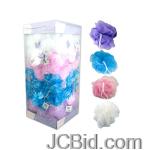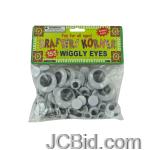
| Updated Blogs |
|
Computer Support Blog
Essensial Software for Web Based Support
HP Server and Desktop
HP ILO - Remote Tech-Support Software
More .....
|
 RSS Feed | Login
RSS Feed | Login Taka Bis
Takabis
Types of High Bay Lighting
By Taka Bis at 2013-11-27 05:59:30
Led high bay lighting is commonly used in high-ceiling areas to light surfaces more than 15 feet away. Common high-bay applications include gymnasiums, industrial manufacturing, warehouses, and warehouse-type retailers. All lamps used in high-bay applications generally contain mercury, although some varieties most notably high-output T5s and induction fluorescents offer opportunities for mercury reduction. The light from a standard incandescent bulb or fluorescent tube is too diffuse to adequately light a surface at the distance required for high-bay applications. Therefore, high-bay lighting typically requires one of the following:
- Metal halide high-intensity discharge (HID) lamps
- High-pressure sodium HID lamps
- High-output linear fluorescent T5 lamps
- Electrode-less induction fluorescent lamps
- Light emitting diode lamps
The HID lamps used in high bay luminaries offer a higher light output compared to fluorescent lamps, so it is possible to light high industrial halls efficiently with fewer luminaries resulting in cheaper installation high bay lighting and fewer lamp replacements during the system’s lifetime. With high performance acrylic reflectors, they are increasingly being used in shopping malls.
Different types of high bay lighting
HIGH INTENSITY DISCHARGE (HID)
It is often referred to as “arc lighting,” as HID lamps use an electric arc between two electrodes to create light. Mercury, metal halide, or sodium gas act as the conductor.
- MERCURY VAPOR
This is the oldest type of arc lighting where mercury compounds are vaporized to create light. Low initial cost and good lamp life are its advantages. Its disadvantages include high power consumption (upto1000 watts), poor efficiency (25-50lumens/watt), and very poor colour, and 4-17minutes start-up time, rapid lumen depreciation, unsuitable for use with motion and day light sensors, or control.
- METAL HALIDE
Here the vaporization of a mixture of compounds often including, mercury, argon or xenon and a variety of metal halogen (halides) compounds creates light. Good initial efficiency (45-100lumens/watt) and Good initial colour are its advantages. Its disadvantages include high power consumption (upto1500watts), poor lamp life (10,000-20,000hours), and 4-17 minute start-up time, rapid lumen depreciation, unsuitable for use with motion and day light sensors, or controls.
- HIGH PRESSURE SODIUM
The vaporization of sodium compounds in an arc creates light. Good initial efficiency and good lamp life are its advantages. Its disadvantages include high power consumption (upto1000watts), poor color, and 4-17 minute start-up time, rapid lumen depreciation, unsuitable for use with motion and day light sensors or controls.
LINEAR FLUORESCENT
A high efficiency, low pressure discharge lamp with a fluorescent phosphor coating transforms mercury UV radiation into visible light. Its advantages include high efficiency(70-100lumens/watt), low power consumption(upto300watts),long lamp life(upto60,000hours),instant start up time, good colour(80-90CRI),modular construction, good cost to light output ratio, suitable for use with sensors and controls. One of its disadvantages is it contains trace element of mercury.
LIGHT EMITTING DIODE (LED)
It is a high efficiency, solid state light source, utilizing a semiconducting phosphor substance to create light. Its advantages include high efficiency(60-100lumens/watt) ,low power consumption(upto200watts),very long lamp life(upto50,000hours),instant start up time, good colour(80-90CRI),no ballast. Its disadvantages include very expensive initial cost ($150-$700each), relatively new and unproven technology, failures result in full fixture replacement.
It is important to consider the number of lamps contained in equivalent systems, as well as the number of watts per lamp when calculating energy efficiency. The higher the lumens per watt, the less electricity are needed to produce equivalent light. The fewer the kilowatt-hours per year used by a lighting system, the less electricity a facility uses and pays for. Installing efficient lighting is the fastest way to reduce energy costs.
Permalink | Comments (0)
Comments
To add a comment please login by clicking here
